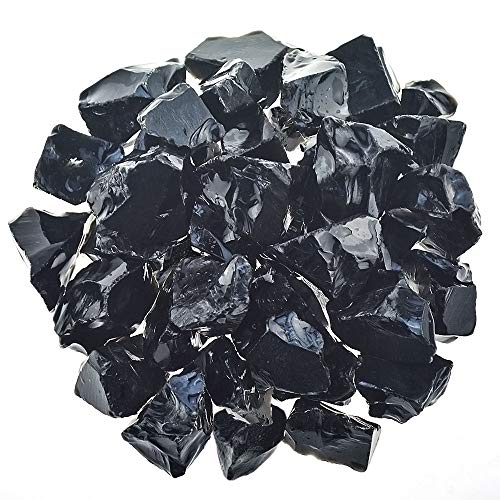Last Updated on June 30, 2022
For many years, obsidian has been used to make jewelry and practical objects.
Aside from the processing, the price of obsidian is dependent on the varieties.
We will dive deep on some very first common questions about obsidian and learn more about it.
How much does obsidian cost?
The price of obsidian varies between $2.00 and $100.00. For unprocessed obsidian, the wholesale value is between $5.00 and $10.00 per kilogram.
What is obsidian?
Obsidian can be found in the location of present and former volcanic activity.
This volcanic glass is formed when molten lava cools rapidly and microcrystalline particles don’t correctly form.
This igneous rock is processed to make a gemstone. Its beauty and usefulness is still getting lots of attention.
The purest form of obsidian can be identified right away as it tends to be a uniform dark color. Meanwhile, impurities present during the formation of obsidian can result in it having a range of colors.
Depending on the impurity that is present in the crystal during the formation, colors include green, dark brown and white.
Where can obsidian be found?
Significant obsidian deposits can be found in Iceland, Argentina, Kenya, Mexico, Hungary, Italy, Japan, Russia and the United States.
There are also mines in Central America, Guatemala and New Guinea to name a few.
What are the uses of obsidian?
Obsidian is primarily used in jewelry and as a gemstone because of its unique crystalline form and the different colors.
The cutting process for obsidian and the polishing are carefully handled by the experts. These rocks are brittle which makes it break easily if not handled properly. Also, its sharpness can lead to deep cuts.
Since obsidian is sharp in nature, this was used before to make sharp tools such as knives and arrowheads. This was also used as cutting tools.
Many people also believe that this rock has multiple powerful metaphysical properties.
It can be used as a protective stone to protect yourself from negative energies.
In addition, it can be used to stimulate growth, bring positivity to people who are dealing with emotional blockage and traumas.
How many obsidian colors are there?
Here are some of the most popular types of obsidian:
Rainbow obsidian– This is a rare type of obsidian. The occurrence takes place less frequently than the others. Similar to what is observed in silver or gold, rainbow obsidian has a radiant metallic sheen.
This price for rainbow obsidian ranges from $20.00 to $50.00.
Snowflake obsidian– Obsidian is an unstable type of matter, both chemically and physically. The formation of this rock may take place in random areas of a specimen which could lead to snowflake-like appearance. This form looks greyish or whitish.
When already cut and polished, the price of snowflake obsidian ranges from $8.00 to $25.00.
Mahogany obsidian– This variation occurs when brown obsidian and black obsidian collide. The combination is the earthiest tone, you can see a dark brown in it with deep black striations.
The value for this ranges from $3.00 to $9.00.
Silver Sheen obsidian– Silvery inclusions in obsidian create a subdued metallic color. Nevertheless, this stone does not contain silver.
Gold Sheen obsidian– This golden sheen obsidian looks so expensive. Crystal practitioners reiterate that the presence of honey metal inclusions is the reason why this stone shines the way it does.
For a polished and shaped golden sheen obsidian, the price ranges from $10.00 to $20.00.
Black obsidian– This is the most common obsidian and was used by our ancestors for making sharp objects to be used in their daily lives.
This value for this black stone is between $20.00 and $35.00 for pure stone.
Don’t forget to check out our guide on How to tell if black obsidian is real? 4 Easy Methods
Purple Sheen obsidian– The purple sheen obsidian occurs when there is mineralization in gas bubbles. The occurrence results in purple looking stones.
Pumpkin obsidian– This stone is called pumpkin obsidian although it has shades of brown.
Double flow obsidian– This occurs when two flows of lava combine at a single point. The combination creates a beautiful surface pattern with multiple color.




